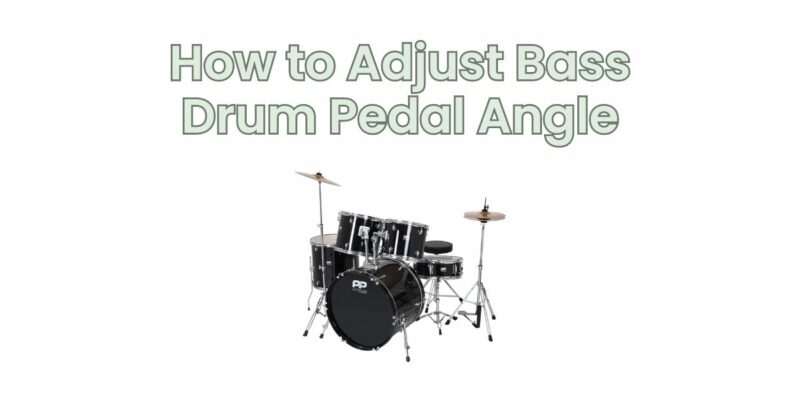The angle of your bass drum pedal plays a significant role in your drumming technique and overall comfort. Adjusting the pedal angle allows you to find the optimal position that suits your playing style, foot technique, and personal preferences. In this step-by-step guide, we will walk you through the process of adjusting the angle of your bass drum pedal, enabling you to fine-tune your setup and enhance your drumming experience.
Step 1: Identify the Angle Adjustment Mechanism:
Start by identifying the angle adjustment mechanism on your bass drum pedal. Most pedals have a screw, bolt, or lever located near the connecting point between the pedal and the footboard. This mechanism allows you to change the angle at which the beater strikes the bass drumhead.
Step 2: Loosen the Angle Adjustment Mechanism:
Using the appropriate tool, loosen the angle adjustment mechanism to allow for adjustment. This may involve loosening a screw, turning a bolt counterclockwise, or releasing a lever. Make sure to loosen the mechanism enough to provide freedom for adjustment but not so much that it becomes loose or unsteady.
Step 3: Adjusting the Angle:
Once the angle adjustment mechanism is loosened, you can now adjust the angle of the pedal. Begin by considering your preferred playing style and foot technique. Some drummers prefer a flatter angle for a more powerful and direct stroke, while others prefer a steeper angle for greater control and finesse.
To increase the angle (steeper angle), push the footboard away from the bass drum. This will tilt the beater towards you, resulting in a steeper striking angle.
To decrease the angle (flatter angle), pull the footboard closer to the bass drum. This will flatten the beater angle, making it strike the drumhead with a more horizontal motion.
Step 4: Finding the Sweet Spot:
While adjusting the angle, take breaks to test the pedal’s response and feel. Sit behind the drum set and place your foot on the pedal. Play a few strokes and pay attention to the beater’s impact on the bass drumhead. Consider the balance between power, control, rebound, and comfort. Fine-tune the angle until you find the “sweet spot” that suits your playing style and provides the desired response.
Step 5: Tighten the Angle Adjustment Mechanism:
Once you are satisfied with the pedal angle, it’s time to secure it in place. Tighten the angle adjustment mechanism using the appropriate tool. Make sure it is tightened enough to hold the desired angle firmly, but be cautious not to overtighten and risk damaging the mechanism or compromising adjustability.
Step 6: Test and Refine:
After securing the pedal angle, test it again to ensure it meets your expectations. Play various patterns, styles, and dynamic levels to evaluate the pedal’s performance. If necessary, make slight adjustments to the angle to fine-tune the pedal’s feel and responsiveness.
Conclusion:
Adjusting the angle of your bass drum pedal is a vital step in customizing your drumming setup. By following this step-by-step guide, you can achieve an angle that complements your playing style, foot technique, and personal preferences. Remember to identify the angle adjustment mechanism, loosen it to allow for adjustment, and fine-tune the angle based on your desired playing characteristics. Take breaks to test and refine the angle until you find the perfect balance of power, control, and comfort. With a well-adjusted pedal angle, you’ll be able to unleash your full potential and enjoy a more enjoyable and satisfying drumming experience.


